Overview of the MSI Z87-GD65 Gaming
The packaging is quite cool with the dragon logo and large crest. Overall the design is simple yet pulls the style with the dragon in bothe the main image and the crest but its still somple enough with only a few logos to signify key features and even a Fnatic logo to showoff their pro team who they sponsor.
The rear of the box shows key feature info along with compliance and other info, but this is just a box so lets see what comes inside.
- User Manuals
- Installation Discs
- SATA Cables
- Quick Connect Front Panel Connectors
- V-Check Point Leads
- SLI Ribbon
- IO Shield
- MSI Gaming shield Case Badge Decal
This bundle will easily get the job done and get you up and running. The only think i could think of needing would be a few more SATA cables as the board has 8 onboard SATA ports but only 4 SATA cables.
Here we see the complete board and you can see that mid board there is a mSATA port which is powered by the Z87 chipset so you can get up to full SATA 6G support for a mSATA SSD installed here which means you can have a fully installed OS and games without a single SATA Cable. also note that there are many PCIe x1 cards for your various add in cards from specialized video capture cards to anything else you may need. Also note the red and black styling which is primarily black but has tones of red just enough to avoid being completely dark.
Click Image For a Larger One
Click Image For a Larger One
- PS2 combo keyboard/mouse port
- 2x USB 2.0 Ports
- Clear CMOS Button
- Optical and Coaxial SPDIF connectors
- 4x USB 3.0 ports
- Gigabit LAN port (Killer E2205)
- Dsub Port
- DVI Port
- HDMI Port
- up to 8 Channel HD audio via Realtek ALC1150
The connectivity is very good for this board especially with native USB3.0 now, and I honestly have no complaint about the other options although for the top gaming model I was hoping to see WiFi capability.
Click Image For a Larger One
Moving to the far right near the 24 Pin ATX connector you can see the V-Check Point cables connector which is where you can take direct readings from the board for voltages which will give you some idea of how things are running and also help with diagnosis in the case problems arise.
The control buttons are simple and are for power/reset/OCGenie, however there is also a small DIP switch which enables the gamer OC mode for OCGenie which you can see somewhat next to the OCGenie switch. These amek it much easier in a bench top configuration to control your board.
Here also you see the GO 2 BIOS button which when powered off will enable as soon as you power on to be straight into BIOS without the need to spam the Delete key. Also the LCD poster displays posting informational codes so that if it hangs at a certain area you can better pinpoint and fix the issue much more quickly.
BIOS Overview
Click BIOS 4
Testing & Methodology

We’ve expanded our testing suite considerably since the X79 chipset release, and will continue to use the same methods for most of the motherboards and CPU’s we test. In the interests of thoroughness and accurate results, we run each test at least three times, and some tests more than that. We average the total of all the tests from each benchmark then report the average here.
The OS we use is Windows 7 Pro 64bit with all patches and updates applied. We also use the latest drivers available for the motherboard and any devices attached to the computer. We do not disable background tasks or tweak the OS or system in any way. We turn off drive indexing and daily defragging. We also turn off Prefetch and Superfetch. This is not an attempt to produce bigger benchmark numbers. Drive indexing and defragging can interfere with testing and produce confusing numbers. If a test were to be run while a drive was being indexed or defragged, and then the same test was later run when these processes were off, the two results would be contradictory and erroneous. As we cannot control when defragging and indexing occur precisely enough to guarantee that they won’t interfere with testing, we opt to disable the features entirely.
Prefetch tries to predict what users will load the next time they boot the machine by caching the relevant files and storing them for later use. We want to learn how the program runs without any of the files being cached, and we disable it so that each test run we do not have to clear pre-fetch to get accurate numbers. Lastly we disable Superfetch. Superfetch loads often-used programs into the memory. It is one of the reasons that Windows occupies so much memory. Vista fills the memory in an attempt to predict what users will load. Having one test run with files cached, and another test run with the files un-cached would result in inaccurate numbers. Again, since we can’t control its timings so precisely, it we turn it off. Because these four features can potentially interfere with benchmarking, and and are out of our control, we disable them. We do not disable anything else.
One thing to note is that we are revamping our testing method in order to better represent motherboard performance and offering to you guys the consumer. Also we want to make it an easier read for you without miles of endless charts. Please feel free to provide feedback on what you think as many benchmarks will be shuffled or removed completely.
Test Rig
| Test Rig | |
| Case | Open Test Bench |
| CPUs |
|
| Motherboards |
|
| Ram | GSkill TridentX 2666MHz |
| CPU Cooler | Swiftech 240mm rad custom loop |
| Hard Drives | Western Digital Velociraptor 1TB 10000RPM 6Gb/s Hard Drive |
| SSD | 1x Kingston HyperX 240GB SATA III 6Gb/s SSD |
| Optical | ASUS DVD-Burner |
| GPU | Intel iGPU or Nvidia GTX 680 |
| PSU | Thermaltake Toughpower XT 1475W Gold |
| Mouse | Tt eSPORTS Black Gaming Mouse |
| Keyboard | Tt eSPORTS Meka G1 Mechanical Gaming Keyboard |
Test Suite
We will use the following applications to test the performance of the Z87 Chipset (Motherboard, Processor).
| Benchmarks |
|---|
| SuperPi Mod 1.5 |
| Wprime 1.55 |
| PCMark 7 |
| 3DMark 11 |
| Cinebench R11.5 |
| SiSoft Sandra 2013 |
| X264HD |
| Truecrypt 7.1 |
| Unigine Heaven 4.0 |
| Metro 2033 |
| Batman Arkham City |
| Sniper Elite V2 |
PCmark 7

First up is PCMark and, just like the Intel board we see a nice little increase vs the previous generation Ivy Bridge setups. The optimizations really show themselves when overclocked on the MSI board as it jumps quite a bit ahead of the previous gen and even the Intel Haswell based platform.
3DMark 11

iGPU
Here you can see that running 3DMark 11 with the iGPU gives similar results to what we have seen which with the HD4600 is still quite impressive.
Discrete GPU
Switching over to a discrete card, you can see that performance can improve on the Physics end which is rendered on the CPU. However, when it comes to overall discrete graphics performance, the gain is marginal as cards simply cannot reach the limit of the PCIe 3.0 controller on Ivy Bridge, let alone Haswell.
SuperPi
This tests single threaded perfomance and clock efficiency by processing digits of the number pi. Going from the previous gen Z77 to Z87 yields a nice efficiency jump clock for clock, but we still feel this could be a premature result. The result with the MSI board seems a bit off, and we were getting BIOS updates from pretty much every manufacturer down to the deadline, so we expect as the new firmware is refined we could see even more performance refinements and improvements.
Wprime
WPrime is similar to Superpi, but is multi core aware and you can set the core count. We used 8 threads to take advantage of the 4770K’s HyperThreading ability. Here you can see that the efficiency in multi core processing improves as you can see a pretty nice gain going from Z77 to Z87, and even more so when overclocked. We are quite excited to see what this platform can do as we get our hands on more boards to test real world performance.
On the MSI board we see some strange results again but this could stem from the memory efficiency of the Intel board as there is something amiss there in terms of memory performance as it pulls numbers consistently that simply are quite a bit ahead of anything we have seen.
Cinebench R11.5

“CINEBENCH is a real-world test suite that assesses your computer’s performance capabilities. MAXON CINEBENCH is based on MAXON’s award-winning animation software, CINEMA 4D, which is used extensively by studios and production houses worldwide for 3D content creation. MAXON software has been used in blockbuster movies such as Spider-Man, Star Wars, The Chronicles of Narnia and many more. MAXON CINEBENCH runs several tests on your computer to measure the performance of the main processor and the graphics card under real world circumstances. The benchmark application makes use of up to 16 CPUs or CPU cores and is available for Windows (32-bit and 64-Bit) and Macintosh (PPC and Intel-based). The resulting values among different operating systems are 100% comparable and therefore very useful with regard to purchasing decision-making. It can also be used as a marketing tool for hardware vendors or simply to compare hardware among colleagues or friends.”
SiSoft Sandra 2013

“SiSoftware Sandra (the System Analyzer, Diagnostic and Reporting Assistant) is an information & diagnostic utility. It should provide most of the information (including undocumented) you need to know about your hardware, software and other devices whether hardware or software. It works along the lines of other Windows utilities, however it tries to go beyond them and show you more of what’s really going on. Giving the user the ability to draw comparisons at both a high and low-level. You can get information about the CPU, chipset, video adapter, ports, printers, sound card, memory, network, Windows internals, AGP, PCI, PCI-X, PCIe (PCI Express), database, USB, USB2, 1394/Firewire, etc.”
Here with Sandra testing, you can see there is some give and take here. One area that surprised us was the AES encyption, which makes an absolutely huge leap going from Z77 to Z87.
Another interesting area we have seen has to do with the memory bandwidth. On the Intel board, a dual channel bandwidth can go into the 32GB/s range, whereas the competition is around 26-28GB/s. While this may not seem like much, that really is a very huge pipeline for data. Testing another Z77 model from two different manufacturers now reveals that the intel board is the only one capable of pulling such a feat, which means they definitely have some special tweaks going on making for some very impressive memory capabilities.
X264HD

Transcoding has become more popular now and the latest Sandy Bridge processor added support for AVX instruction for faster video transcoding. With that you can see that going from Ivy Bridge to Haswell can net you some very good gains, especially a 2FPS gain on 2 Pass. This tells us that overall optimizations to the new platform are present and working very well. This same rings true but with some small efficiency improvements with the MSI board as it has a bit more performance tuning built into it.
Truecrypt 7.1

TrueCrypt is a real world application that gives a good indication of the true performance of our latest processor. Here the new Core i7 4770K puts some definite room between itself and the outgoing 3770K with over a 22% performance increase, which means in the same time you can get a lot more work done. Here with the MSI board you see a small performance improvement at stock but at overclock its a dead heat.
Unigine Heaven 2.5

Unigine Heaven is a benchmark program based on Unigine Corp’s latest engine, Unigine. The engine features DirectX 11, Hardware tessellation, DirectCompute, and Shader Model 5.0. All of these new technologies combined with the ability to run each card through the same exact test means this benchmark should be in our arsenal for a long time.
iGPU
The iGPU is not ideal for a 3D-heavy load like the Heaven benchmark. Nonetheless, to see a three FPS gain is quite huge for an integrated unit and tells us that with the right settings, the HD4600 could easily be used for gaming. This definitely lives up to what Intel is trying to accomplish, which is to make a solution that literally covers all of the bases in one shot.
Discrete GPU
Unigine Heaven on a discrete GTX 680 gains about a single FPS, probably just due to the expanded performance with the overclock. For the most part, however, recent platforms are so efficient that there simply is no bottleneck for current gen card models.
Metro 2033

Metro 2033 shows small drops in results compared to the reference Intel board which we cannot explain but upon multiple retests it stays the same and yet other graphical tests trhe MSI is faster so this falls into the strange occurence category as sometimes you will get a game that simply does not jive well with a specific configuration. (ex. try playing Far Cry 3 on a SRX motherboard)
Batman Arkham City
iGPU
Batman Arkham City is a very pretty game with nice visuals and very cool overall effects. With good settings but no AA, we tested it on the iGPUs, and the minimum framerates are much higher. The iGPU also yields an average of over 30FPS which means the game would be rather playable, albeit with some occasional choppiness possible.
Discrete GPU

Discrete GPU results for the MSI board are actually quite good as you get an average almost 10 FPS higher than on the Intel board which speaks well to the optimizations coming from the MSI team.
Sniper Elite V2
iGPU
The HD4600 is impressive but we were interested to see that in the overcklocked testing while the average was 0.1FPS higher the peak or max framerate was much more subdued. Seeing this result almost makes me feel like you are opening up the bus by overclocking which means you dont get the sudden spikes you normally may see where you get an average of 9FPS but 60FPS max.
Discrete GPU
Once again we see a drop in max FPS but a gain in average which means that consistently the MSI Board is pulling higher FPS numbers which is good.
Our Final Thoughts
 MSI set out to build a Gaming based board with the Haswell Z87 chipset and we think they did very good with a competitive price and a nice feature set. What is really cool is to see how key feature set items make their way into this board from the higher end OC models similar to what we saw on the Gaming series GTX 770 we tested just a short time ago. The features are plentiful and actually useful, from the Killer E2205 network controller to the high end audio solution and even the overclocking components all come together to make a very nice package.
MSI set out to build a Gaming based board with the Haswell Z87 chipset and we think they did very good with a competitive price and a nice feature set. What is really cool is to see how key feature set items make their way into this board from the higher end OC models similar to what we saw on the Gaming series GTX 770 we tested just a short time ago. The features are plentiful and actually useful, from the Killer E2205 network controller to the high end audio solution and even the overclocking components all come together to make a very nice package.
The one thing we wish we could have seen is built-in WiFi as so many homes now days are going wireless and it just seems like a missed opportunity and really would have sent this board over the top.
The board is placed in a super competitive position due to its price and high end gaming nature it really would be tough not to recommend it as a consideration for any single or dual GPU rig as even the looks of the board just jump out at you.
| The Pro’s: | Cons |
|
|
Review Overview
Performance - 9
Value - 9
Quality - 9
Features - 8
Innovation - 8
8.6
MSI found a way to integrate some awesome gaming features and make a great high end gaming grade board with a nice price tag. For this it earns the Bjorn3D Golden Bear Award.
 Bjorn3D.com Bjorn3d.com – Satisfying Your Daily Tech Cravings Since 1996
Bjorn3D.com Bjorn3d.com – Satisfying Your Daily Tech Cravings Since 1996


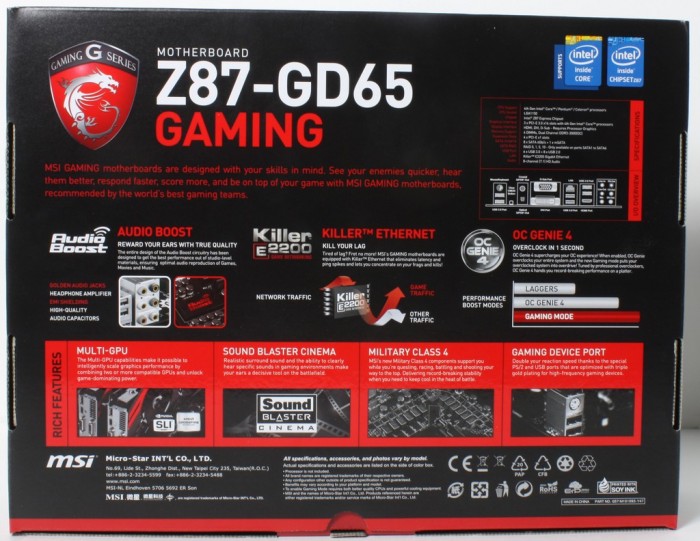
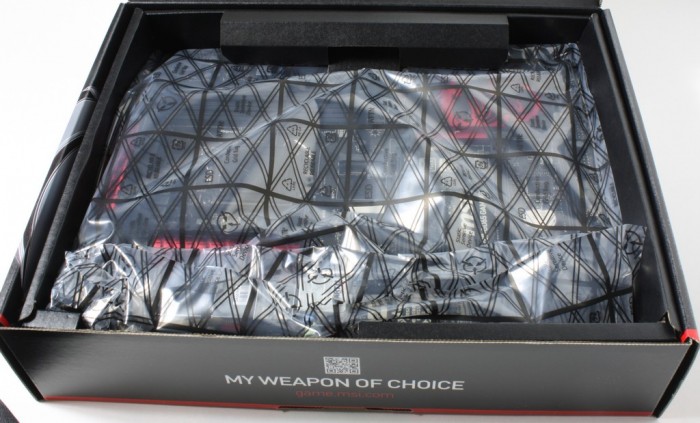







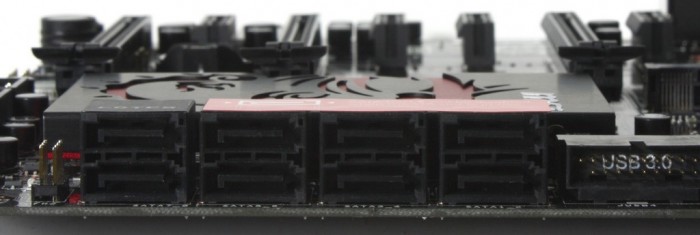


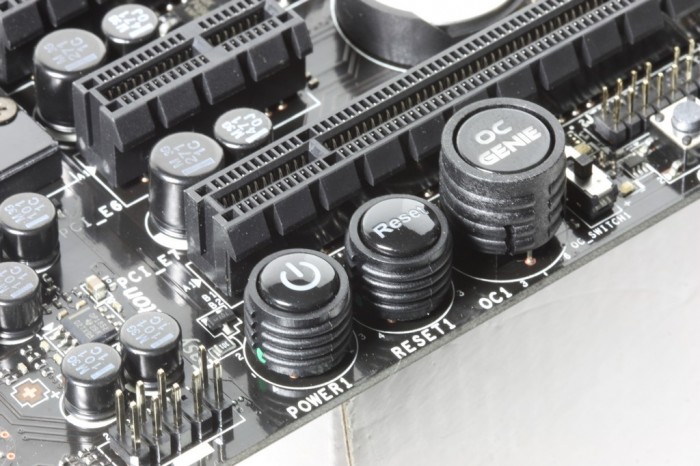






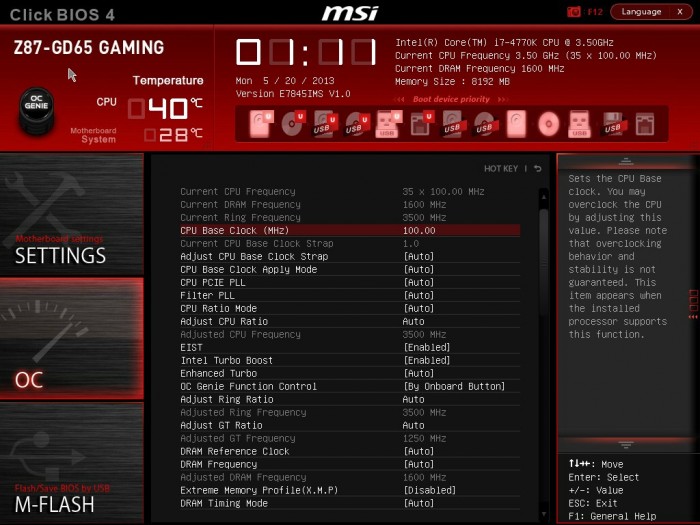
























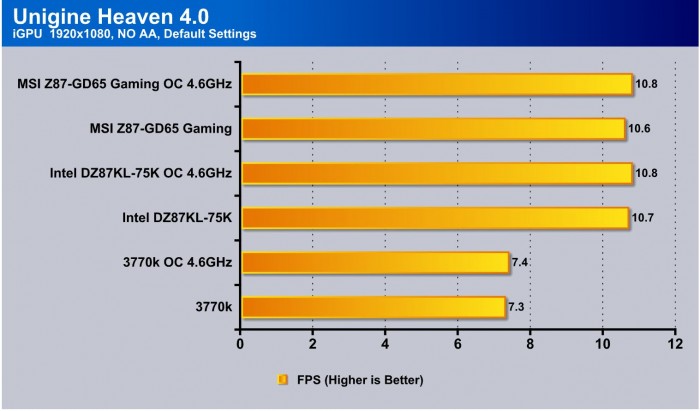



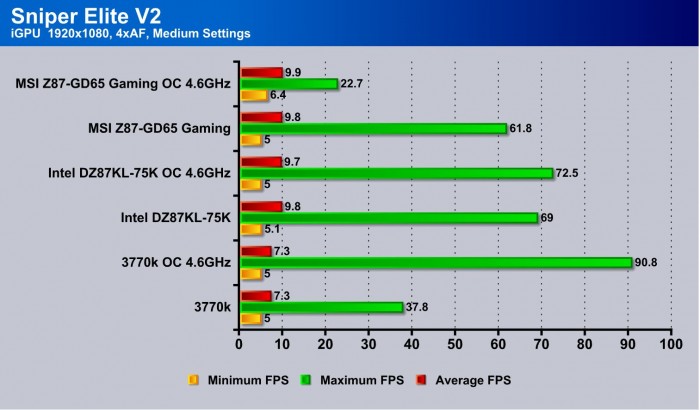




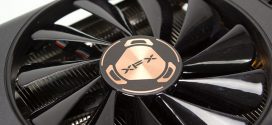




Motherboard reviews like these are stupid, no offense. What’s the point in benchmarks when other much more important things like — inspection on the VRM temps and quality, the amount of DPC latency a board produce, LAN and file transfer performance can be done.
Don’t review a motherboard if you’re going to be lazy in just throwing in the standard benchmarks as they are redundant since performance of each motherboard today is less than 2%.